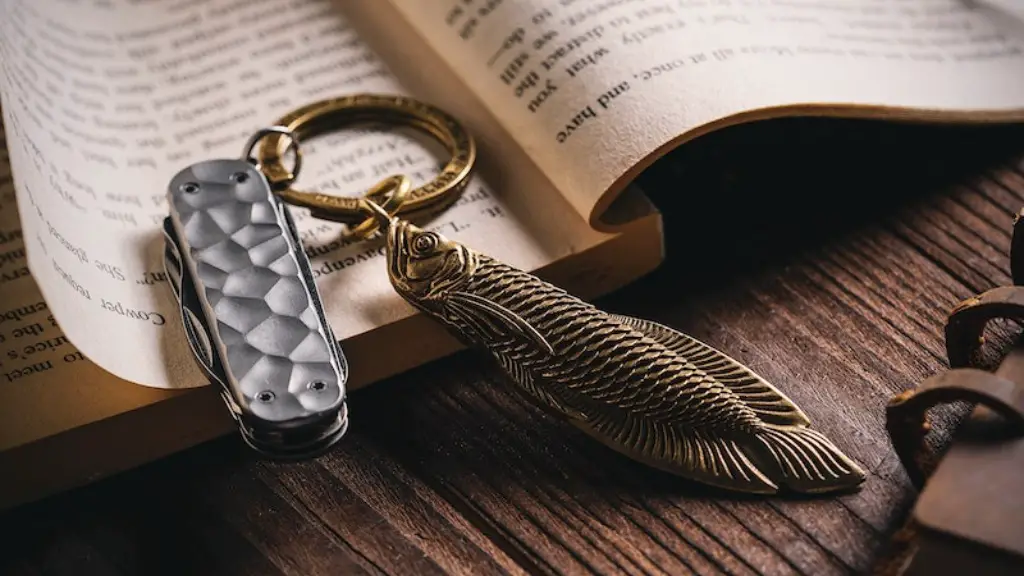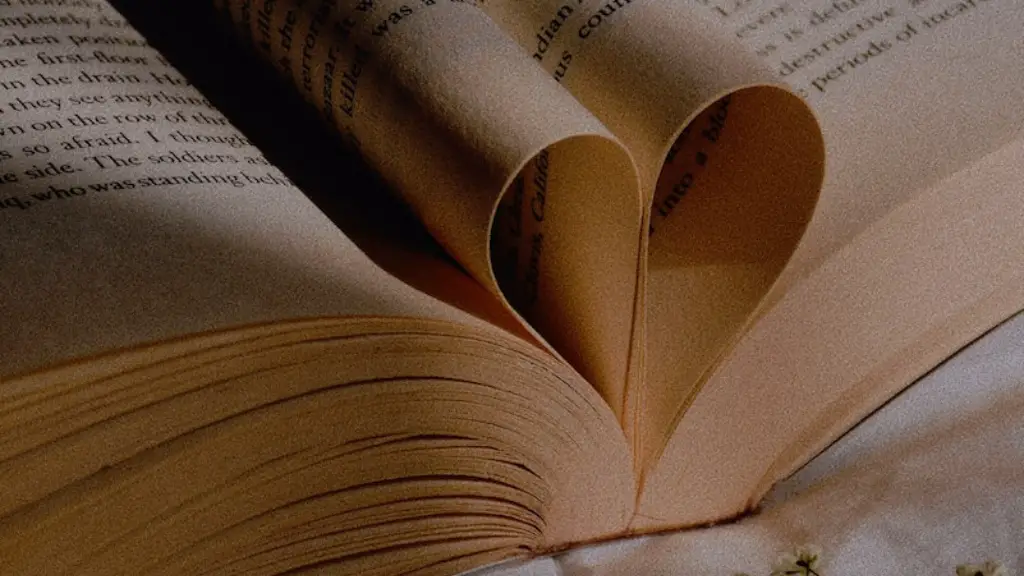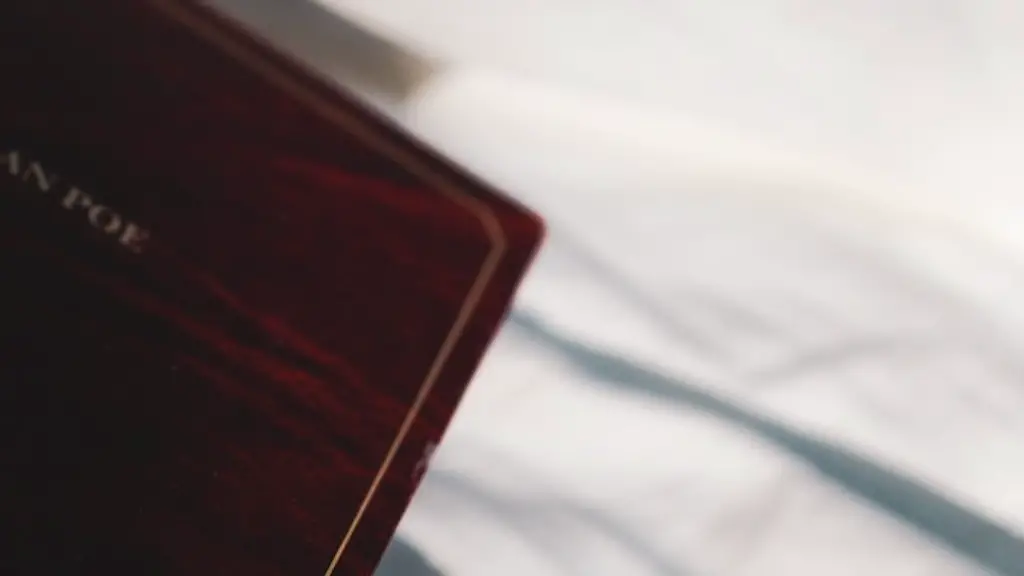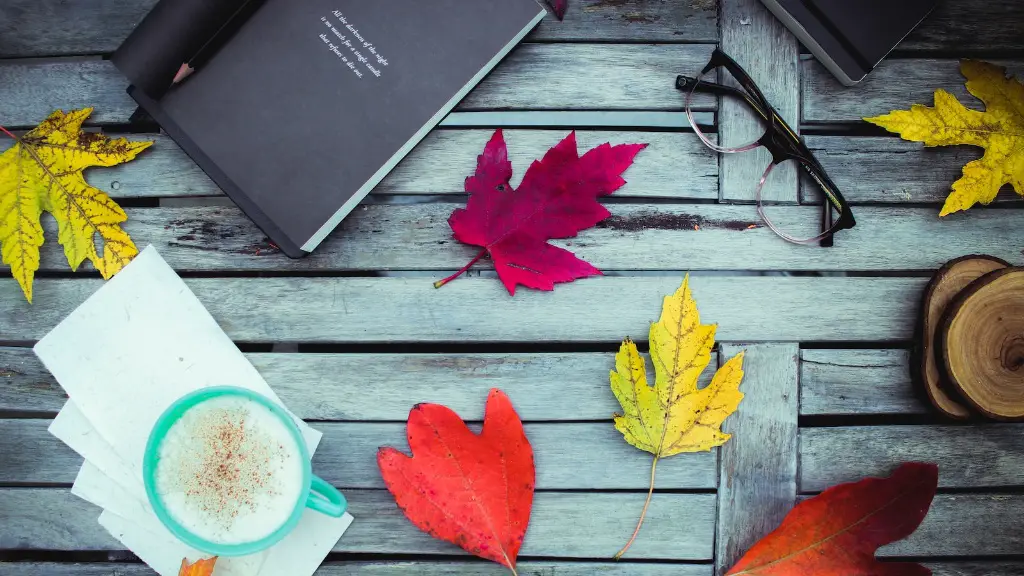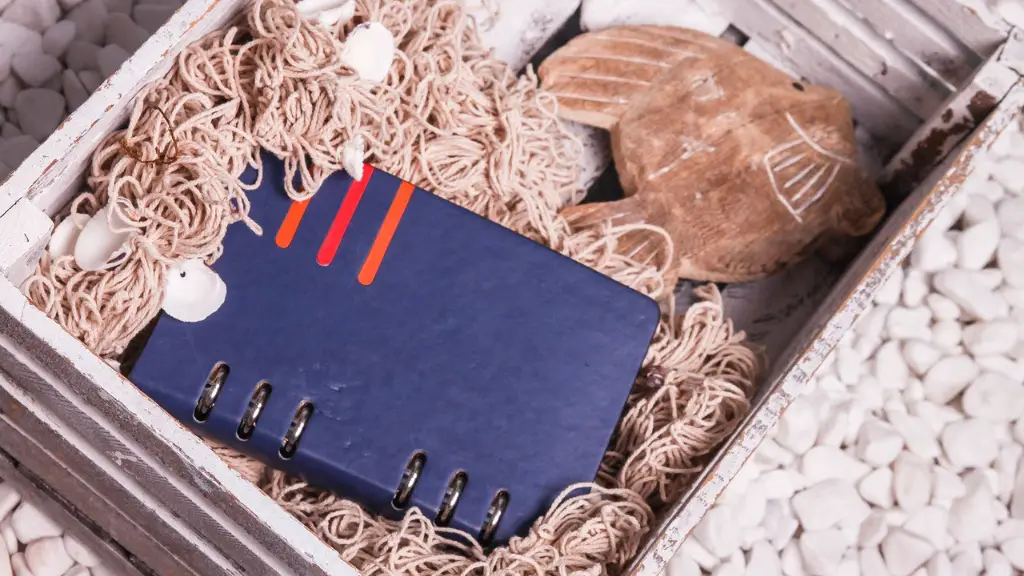Form is an important factor that contributes to the quality of the poem. One of the most basic elements of form is the rhythm, which is created through patterns of stressed and unstressed syllables. The use of stressed and unstressed syllables in poetry is sometimes referred to as a poetic meter, which is the art of using words and lines to achieve a particular rhythm and feeling.
Each language has its own set of structures of stressed and unstressed syllables. In English, for instance, the most common type of meter is known as iambic pentameter, or the five-beat line. This type of meter has five beats in each line and consists of an alternating pattern of unstressed syllables followed by stressed syllables. For example, in the line “This is an example of iambic pentameter,” the pattern of unstressed syllable followed by stressed syllable can be heard in the words “this is,” “an exam-” and “ple of.”
In addition to iambic pentameter, there are several other types of poetic meters used by poets. These include trochaic meter, which has a pattern of stressed syllables followed by unstressed syllables, and dactylic meter, which has a pattern of stressed syllables followed by two unstressed syllables. Other forms of meter include anapestic, amphibrachic, and various mixed meters.
The use of these various meters can have a significant impact on the overall tone and mood of the poem. A poem written in iambic pentameter, for instance, has a more formal and dignified tone than one written in trochaic meter, which has a more lighthearted and playful feel. Different specific meters can also be used to create different effects and evoke certain emotions in the reader.
The use of patterns of stressed and unstressed syllables in poetry can also help to create a sense of flow and connection between the lines of the poem. This is because poets often set up repeating patterns of meter throughout their poems. These patterns act as a sort of musical “hook” that ties the entire poem together, allowing the poet to create a unified and harmonious work.
Finally, the use of patterns of stressed and unstressed syllables can create a subtle tension in a poem. This tension gives the poem a subtle, underlying tension that keeps the reader engaged and interested in the poem. The structure provided by poetic meters also makes it possible for poets to experiment with the flow of their poetry, allowing them to create more complex and intricate works of poetry.
The Role of Meter in Poetic Forms
Patterns of stressed and unstressed syllables also play an important role in many different poetic forms, such as sonnets and odes. These forms often require the poet to adhere to a specific pattern of meter to meet the requirements of the poetic form. In sonnets, for instance, the poets usually must write their lines in iambic pentameter. Similarly, an ode usually has a specific meter that sets it apart from other poetic forms.
Furthermore, patterns of stressed and unstressed syllables are often used to create distinct rhyme schemes in poetry. For example, a poem written in iambic pentameter might have a rhyme scheme of abab, where each line of the poem rhymes with the one after it. This rhyme scheme is particularly common in sonnets, as well as other poetic forms.
In addition, meter can be used as a vehicle for conveying a certain mood or emotional state. In this way, meter can be used to create a sense of tension or urgency in a poem, or to emphasize a certain theme or idea. Additionally, poetic meter can be used to suggest a particular era, style, or genre, and it can be used to contrast different elements of a poem, such as the structure of the poem and its subject matter.
Basically, the use of patterns of stressed and unstressed syllables in poetry is extremely important and can have a major impact on the overall tone and mood of a poem. Poets can use meter to establish a certain rhythm, create a sense of connection between the lines, and evoke certain emotions in the reader. Additionally, meter can be used to adhere to certain poetic forms and create unique rhyme schemes. Ultimately, meter is an essential tool for all poets, and is an integral part of the poetic process.
The Evolution of Meter in Poetry
Meter has been used in poetry for centuries and has evolved to accommodate the changing needs of poets. Early uses of meter were often very strict and limited in their use of rhythm and meter. Meanwhile, later poetic forms, such as the sonnet, were more flexible in their use of meter and allowed for greater experimentation with the way that words and syllables were used.
Today, the use of meter in poetry is still evolving and changing. Modern poets often incorporate meters from different languages and cultures, as well as new patterns of stressed and unstressed syllables. Additionally, some poets use meter in unconventional ways, such as using irregular beats or using a combination of different meter types in the same poem. Overall, meter is still an important factor that contributes to the quality and success of a poem.
The Impact of Meter on Poetry Today
The development of meter in poetry has had a major impact on the way that poetry is written and performed today. For example, the widespread use of poetic meters has led to an increase in the number of poems written in metered forms, such as sonnets and odes. Additionally, poets now often incorporate a greater range of meters into their work, which allows them to create more complex and interesting works.
The use of meter in poetry has also had an impact on the way that poems are received by readers. Many readers today expect poems to be written in some kind of poetic meter, and they may be confused or unimpressed by poems that do not adhere to traditional forms of meter. Additionally, readers may find poems written in unconventional forms of meter to be more interesting and engaging.
Finally, the evolution of meter in poetry over the centuries has had an impact on popular culture as well. Many popular musical genres, such as hip-hop, rap, and reggae, incorporate poetic meters into their lyrics. Additionally, a number of modern songwriters have incorporated poetic meters into their songs, creating a new and interesting form of music.
Different Types of Meters in Poetry
The exact form of a poetic meter can vary from poem to poem and from one genre to another. For instance, a sonnet will usually be written in iambic pentameter, while a rap song may contain multiple meters, including anapestic, trochaic, and dactylic. Additionally, some poets incorporate different patterns of meters into their works, creating a unique “mixed meter” that is not found in any other genre.
Additionally, different types of meter have different effects on a poem. A poem written in iambic pentameter, for instance, has a more lighthearted and formal feel, while a poem written in trochaic meter has a more energetic and playful tone. Different types of meter can also be used to evoke certain emotions in the reader, as well as to create a sense of flow and connection between lines.
Overall, the use of patterns of stressed and unstressed syllables in poetry has a major impact on the success of a poem. Poets use meter to create a certain rhythm, evoke certain emotions, and establish a particular tone and mood. Different types of meter can also be used to adhere to certain poetic forms, and to create a sense of unity and flow between lines. Ultimately, meter is a powerful tool for all poets and should not be overlooked.
The Impact of Technology on Meter
Technological advancements over the last century have also had an impact on the use of meter in poetry. Poets today have access to a variety of digital tools and programs that can help them to create and manipulate meter in their work. By using these tools, poets can easily experiment with different types of meter and explore new forms of poetic expression.
Additionally, many poets now use technological tools to help them create and analyze meters. There are a variety of programs available that can be used to analyze poems and to determine the meter used in a given poem. These programs can be very helpful to poets as they can help them to create a more unified and consistent meter in their work.
Finally, technology has also allowed poets to experiment with the way that meter is performed. With the advent of digital recording devices, poets can now record their work and listen back to it to make sure that it meets a certain meter. This, in turn, allows poets to make changes and adjustments to the meter of their poems in order to achieve a desired effect.
Conclusion
Ultimately, the use of patterns of stressed and unstressed syllables in poetry is an essential tool for all poets. Meter can be used to create a sense of flow and unity, to evoke a certain mood or emotion, and to adhere to certain poetic forms. The use of meter has evolved over time to accommodate the changing needs of poets, and technology has also had a major impact on the way that meter is used today.
